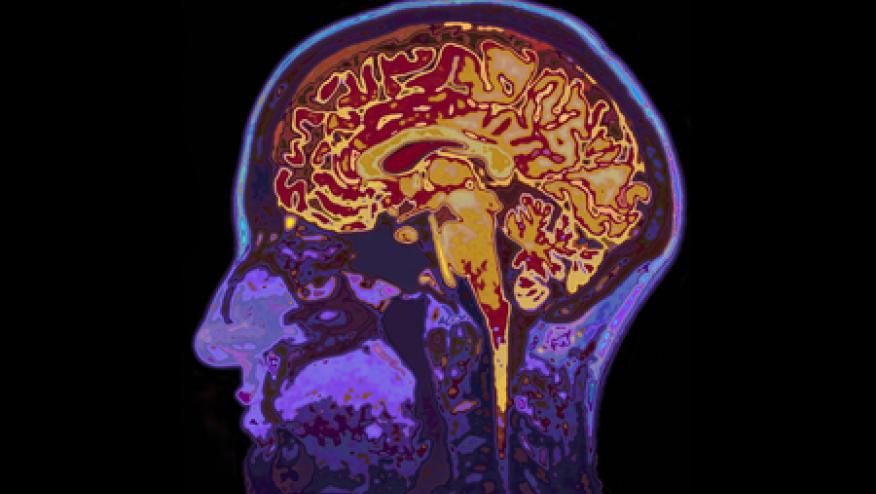Stroke Risk Confirmed in SLE Save

The most common cerebrovascular events (CVEs) seen among a large cohort of patients with systemic lupus erythematosus (SLE) were stroke and transient ischemia, and the majority of these events were attributable to the disease itself, a multinational study determined.
Among 109 CVEs reported in a group of 1,826 SLE patients (4.5%) during a mean of 6.6 years of follow-up, 55% were stroke and 25.7% were transient ischemia, according to John G. Hanly, MD, of Dalhousie University in Halifax, Nova Scotia, and colleagues.
And 94.5% were considered SLE-related (using a non-stringent model), the researchers reported in Arthritis Care & Research.
Neuropsychiatric manifestations occur commonly among patients with SLE, and can range from headache and mood disorders to psychosis. The prevalence of the subgroup classified as CVEs has been reported as 5% to 18% in older studies, but the current frequency, attribution, and outcomes remain uncertain.
To address this knowledge gap, Hanly and colleagues from the Systemic Lupus International Collaborating Clinics network analyzed data from patients from 36 centers in 12 countries who were enrolled from 1999 to 2011.
While the American College of Rheumatology has classified 19 events as neuropsychiatric manifestations of SLE, five are considered specifically CVE: stroke, transient ischemia, chronic multifocal ischemia, subarachnoid and intracranial hemorrhage, and sinus thrombosis.
Almost 90% of the patients were women, mean age at enrollment was 35, and half were Caucasian. Lupus anticoagulant was positive in 21% and anticardiolipin autoantibodies in 12%. Hypertension was present in 34%, obesity in 31%, and high cholesterol in 36%.
Other than stroke and transient ischemia, CVEs identified in the cohort were subarachnoid/intracranial hemorrhage in 8.3%, chronic multifocal ischemia, also in 8.3%, and sinus thrombosis in 2.8%.
The estimated cumulative incidence of any CVE over 10 years was 5% (95% CI 3.9-6.2) and those attributable to SLE was 4.9% (95% CI 3.7-6), while for those with a previous event, the incidence at 5 years was estimated at 11.4% (95% CI 3-19).
There were three CVE-related deaths, two from intracranial hemorrhage and one from cardiopulmonary arrest.
On multivariate regression analyses, a greater risk of CVE attributed to SLE was associated with concurrent neuropsychiatric events either associated or not associated with SLE. For any concurrent attributed events, which included aseptic meningitis, movement disorders, polyneuropathy, seizures, and psychosis, the hazard ratio for CVE was 3.16 (95% CI 1.73-5.75, P<0.001), while for non-attributed events, which included headache, anxiety, plexopathy, and acute confusion, the hazard ratio was 2.60 (95% CI 1.49-4.51, P<0.001).
A greater risk also was seen among African Americans (HR 2.04, 95% CI 1.01-4.13, P=0.047).
An additional analysis found a borderline positive association between lupus anticoagulant at baseline and first CVE (HR 1.77, 95% CI 0.99-3.16).
With the exclusion of transient ischemic events, 63.5% of CVEs had resolved by the end of follow-up. The probability of non-resolution by 10 years for the entire group was 11.64% (95% CI 3.85-35.2).
On the patient-rated SF-36 questionnaire, there was a "significant and sustained reduction in health-related quality of life" associated with CVEs, the investigators reported.
Worse quality of life on the SF-36 physical component was seen for women (-3.12, 95% CI -4.54 to -1.70, P<0.0001), older age (-0.20, 95% CI -0.24 to -0.17, P<0.0001), U.S. Caucasians (-3.52, 95% CI -5.22 to -1.83), African ancestry outside of the U.S. (-2.26, 95% CI -4.05 to -0.47, P<0.001), higher SLE Disease Activity Index (-1.03, 95% CI -1.28 to -0.78, P<0.0001), lupus damage index (-4.08, 95% CI -5.93 to -2.23, P<0.0001), and corticosteroid use (-2.04, 95% CI -2.64 to -1.43, P<0.0001).
For the mental component of the SF-36, worse scores were seen among women (-1.57, 95% CI -3.09 to -0.05, P=0.043), and for patients with higher disease activity scores (-0.57, 95% CI -0.87 to -0.26, P=0.0003) and corticosteroid use (-0.89, 95% CI -1.54 to 0.23, P=0.0085).
Determining the attribution of neuropsychiatric events in SLE can be challenging but is important for treatment. For instance, stroke in a young patient with lupus is likely related to the antiphospholipid syndrome and hypercoagulability and is probably attributable to SLE, according to H. Michael Belmont, MD, of NYU Langone Health in New York City.
"In contrast, for an older lupus patient who has concurrent high blood pressure, hypertension, or diabetes and is a cigarette smoker, an event may more likely be attributable to atherosclerotic and cerebrovascular disease as in the general population," Belmont told MedPage Today.
"The main take-home point of this study is that strokes can be seen in lupus, thankfully not in excess of 4.5%," he said.
Strokes are most often associated with the presence of antiphospholipid antibodies such as lupus anticoagulant, and these patients are candidates for hydroxychloroquine because of its antiplatelet and thromboprotective effects, and also possibly for aspirin, he noted.
However, if the patient is older and has traditional vascular risk factors such as hypertension, diabetes, obesity, smoking, and a strong family history, "the treating clinician should mitigate whenever possible, treating the hypertension, achieving glycemic control, and recommending weight loss," he concluded.
The authors received support from the Canadian Institutes of Health, Lupus UK, the NIHR/Wellcome Trust, the National Institutes of Health, the Singer Family Fund for Lupus Research, Arthritis Research UK, the National Institute forealth Research Biomedical Research Unit, the Danish Rheumatism Association, the Novo Nordisk Foundation, the Medical Research Council (UK), and the Department of Education, Universities, and Research of the Basque Government.










If you are a health practitioner, you may Login/Register to comment.
Due to the nature of these comment forums, only health practitioners are allowed to comment at this time.